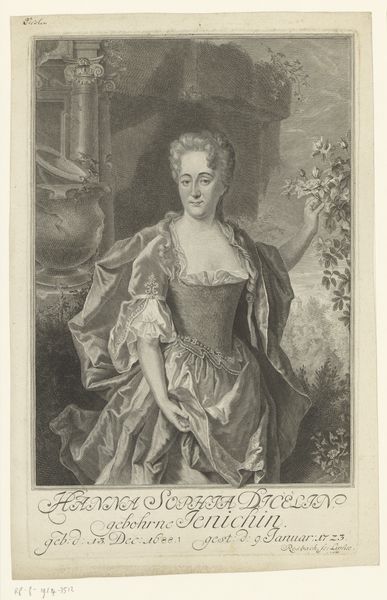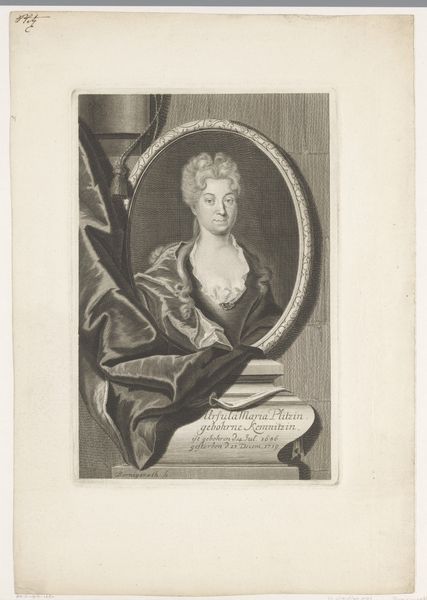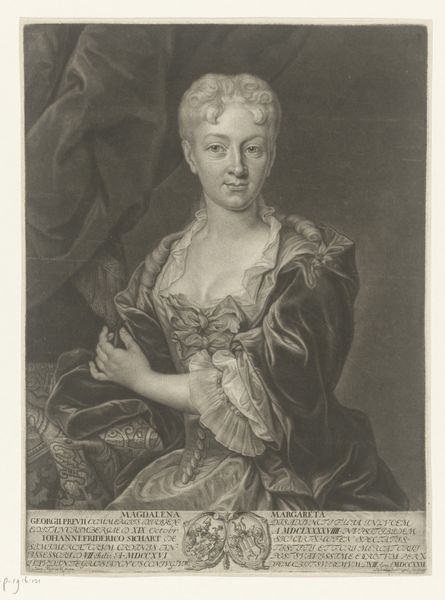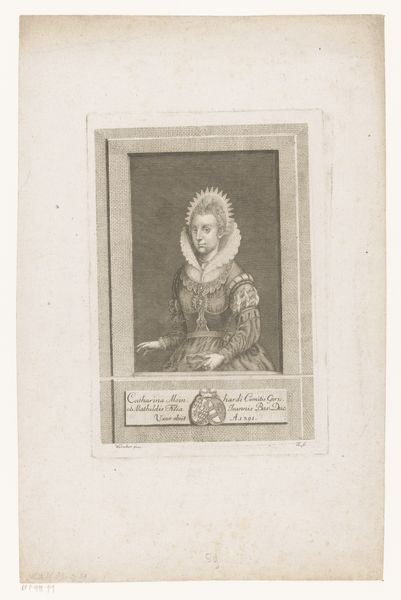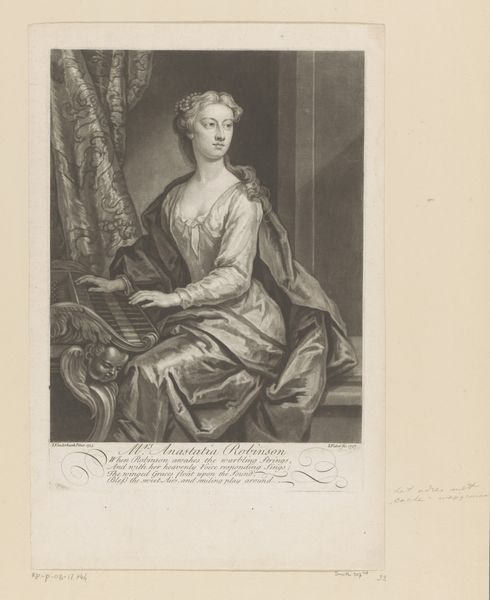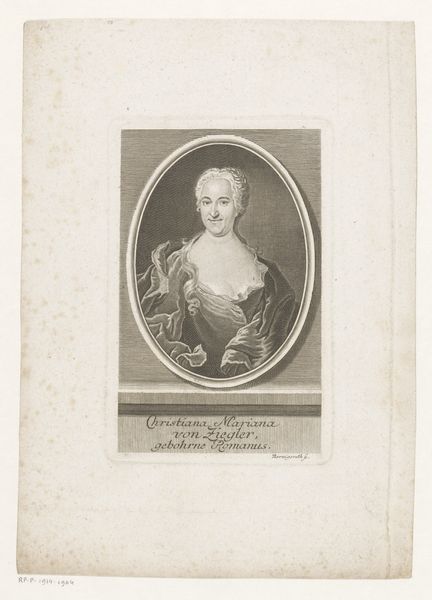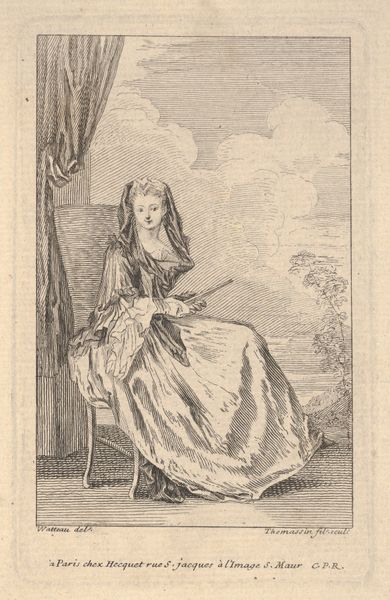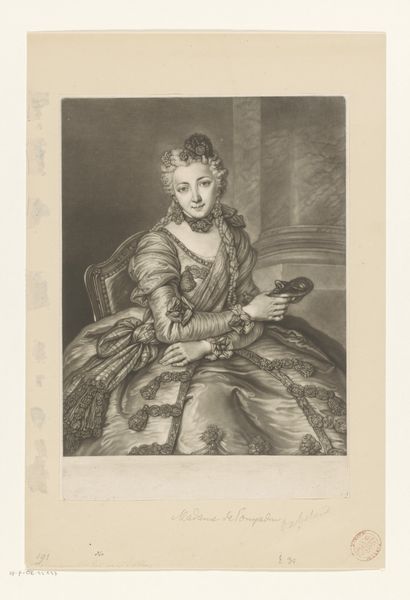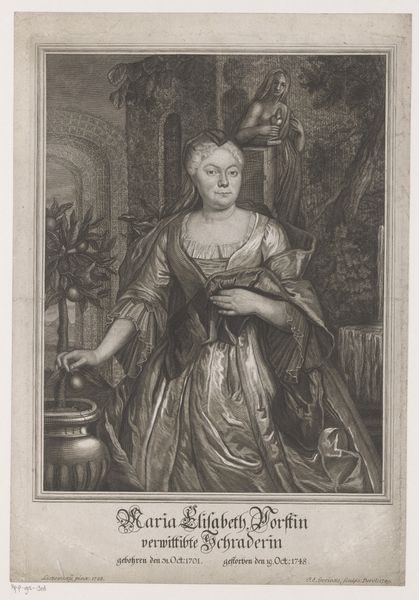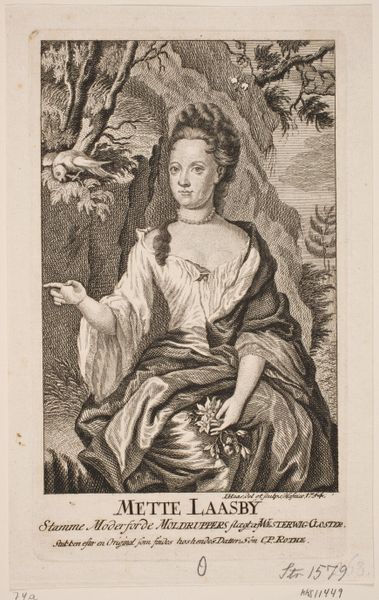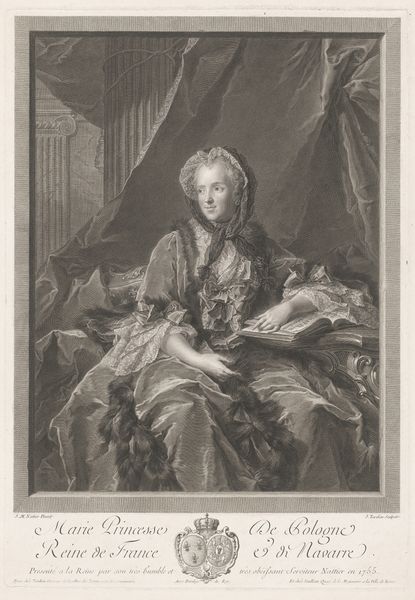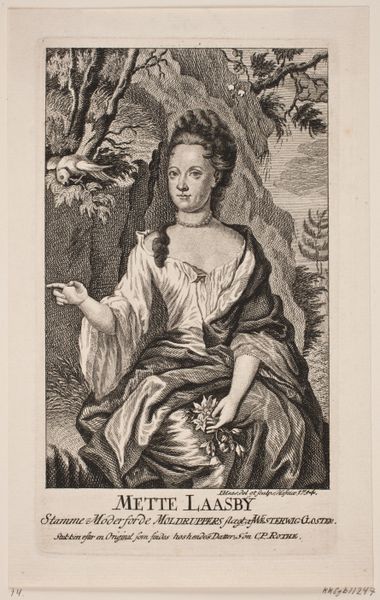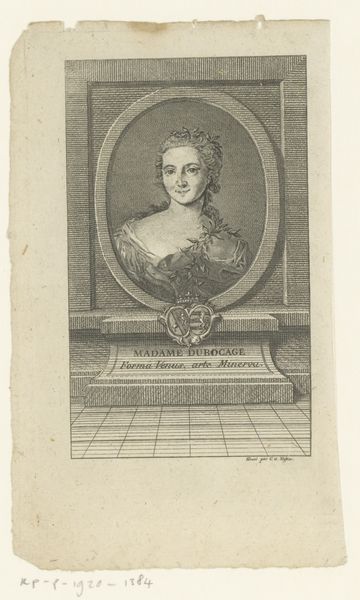
Dimensions: height 378 mm, width 270 mm
Copyright: Rijks Museum: Open Domain
Curator: Johann Friedrich Rosbach created this engraving, “Portret van Anna Sibylla Winckler,” sometime between 1700 and 1749. It resides here at the Rijksmuseum. Editor: Well, first impression: striking composition. The sharp contrasts of the engraving create a dramatic tension, but it's softened by the almost wistful expression of the subject. Curator: The piece really speaks to the public role of portraits at the time. It uses standard iconographic elements common in Northern Europe, combining status display with symbols reflecting personal and societal virtues, like that rather prominently placed skull. Editor: Ah, yes, the "memento mori." The skull, the extinguished candle... classic vanitas symbols, reminders of mortality and the transience of life, cleverly positioned on the left of the composition against architectural elements that mimic the sitter's posture and facial direction to invite a dialogue between life and death. Curator: Precisely. Anna Sibylla Winckler is not just depicted; she is presented as an emblem of morality and societal expectations. Portraits like this were critical tools in shaping social perceptions and confirming status within the community. Note the inscription too; It underlines the virtues one must "emulate" Editor: Agreed. The balance of light and shadow gives her an almost otherworldly presence. This interplay certainly elevates the engraving beyond just a record of her appearance to a contemplation on time, virtue, and legacy. Also, look how he models the volume and creates surface through subtle variation in mark-making—the different types of hatching, cross-hatching, stippling and direct line, allow a full description of textures from satin gown to stone architecture to parchment, even suggesting the tonal modeling found in paintings of the time! Curator: This work provides fascinating insights into how art functions within societal frameworks. These portraits weren’t merely decorative; they were deeply embedded in power structures and social discourse. Editor: I agree. From a formal standpoint, it's the dialogue between sharp lines and the soft gradations that lends it lasting power and makes this a technically masterful piece. Curator: Considering its historical and social setting only deepens the impact of the engraving. Editor: And focusing on form only highlights the hand skill required of its making..
Comments
No comments
Be the first to comment and join the conversation on the ultimate creative platform.
